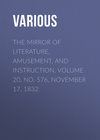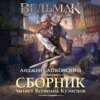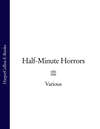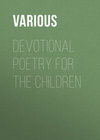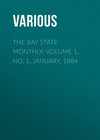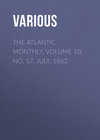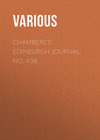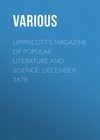Read the book: «The Mirror of Literature, Amusement, and Instruction. Volume 20, No. 576, November 17, 1832», page 4
FINE ARTS
CROSSES
In a recent Number (563) we adverted to the origin of these interesting structures, and attributed their erection to pious feelings, as well as for purposes of a commercial character. The specimens before us appear to have belonged to the latter appropriation—inasmuch as they are what are commonly termed Market Crosses. The first is situate at Leighton Buzzard, or as the name was anciently written, Leighton beau-desert, on the borders of Buckinghamshire, and said to be the Lygean-burgh of the Saxon Chronicle, which was taken from the Britons by Cuthwulph, in the year 571. The principal of the antiquities of the town is the above Cross. It is of a pentagonal form, and of beautiful pointed architecture: it is stated to have been built upwards of five hundred years, but the name of its founder is not known. The anxiety of the inhabitants of Leighton-Buzzard to preserve this relic of olden time is entitled to special mention.

(At Leighton Buzzard.)
"In the year 1650, this cross was presented at the court-leet as being in such a ruinous state, that it greatly endangered the lives of those persons who were passing near it. Upon this occasion a rate of 4d. was levied upon every inhabitant to defray the charge of repairing it. The height of the cross is twenty-seven feet two inches, from the top of the stone-work to the basement story, which is seven feet four inches from the ground, at the lowest side, and consists of five rows of steps rising from the earth. The centre pillar, which supports the arch, is eight feet two inches high, and one foot one inch and a quarter wide, on the side fronting the largest angle. The upper story is disposed into five niches, and there were formerly as many pinnacles at the corners; but one of them has been destroyed: each niche contained a statue. The first appears to have been intended to represent a bishop, another seems like the Virgin and Jesus; a third appears to be Saint John the Evangelist; the others are too much mutilated to be known. Over each arch attached to the cornice, surrounding the building, there were three grotesque heads. The entire height of the cross, from the lowest base to the top of the vane, is thirty-eight feet. It is constructed of stone, and is situated in an open area, near the market-house."

(At Holbeach.)
The second Cross is at Holbeach, in the Holland division of Lincolnshire. The Cross is situate in the market-place of the town; and it is supposed to have been raised about the year 1253; near which period, Thomas de Malton, Lord Egremont, obtained for Holbeach the grant of a weekly market and annual fair.
WINTER EXHIBITION OF PICTURES, AT THE SUFFOLK STREET GALLERY
We attended the private view of this very attractive exhibition, and were happy to find the galleries filled with distinguished Artists and Patrons of Art. The collection is of a novel character, inasmuch as it associates the works of deceased and living British Artists; though, discouraging as may be the fact, the juxtaposition is not to the advantage of the latter: alas! "that's true, 'tis pity, and pity 'tis 'tis true." Nevertheless, the object of the British Artists' Society in forming this collection, is laudable in every respect; since "it is evident that an Exhibition of the works of celebrated deceased Masters is calculated to benefit, in an essential degree, the race of living Artists, who will here have an opportunity of carefully inspecting, and deriving instruction from many of those pictorial efforts which are the pride and honour of the British School:" so true is it, in the case of painters, that the good which men do, lives after them. To the public, we mean the sight-craving public, this Exhibition may be of paramount interest: it may perchance modify their admiration of faithless vanity-feeding portraits, and gaudy compositions of vulgar life, full of coarse effect, and painted as less ingenious articles are made, to catch a purchaser.
The Exhibition embraces specimens of the works of nearly seventy deceased Artists, from various collections. Among them are Reynolds, Hogarth, Gainsborough, Morland, Wilson, Fuseli, Zoffani, Blake, Opie, De Loutherbourg, Northcote, Harlow, Jackson, Bonington, Lawrence, &c. &c.; and, as many of the specimens are associated with pleasurable recollections, we will endeavour to notice a few of them, in succession with the works of the living Artists.
1. Alderman Boydell, painted by Muller, and the property of Messrs. Moon, Boys, and Greaves, who, as the successors of the Alderman, retain his portrait as a kind of heirloom in connexion with the best days of British Art.
10. and 12. Duke and Duchess of Leinster. Reynolds. The drawing of the latter is not quite worthy of the President's fame.
7. Farm Yard and Pigs. Morland. Painted, for aught we know, at the artist's usual rate, when in confinement, "four-guineas per day with his drink."
8. Landscape. Gainsborough. Stamped, as Mr. Cunningham says, all Gainsborough's works are, "with the image of old England."
9. Sir W. Curtis, Bart. Lawrence. A fine portrait of the City wit: his face is lit up with good nature, such as proved in the Baronet's career, a surprising foil to the madness of party.
11. Landscape and Cattle. The former by Barrett, the latter by Gilpin. Cunningham calls Barrett "an indifferent dauber;" rather a harsh term in connexion with this picture.
18. Rape of the Lock. A picture of merit, by Henry Wyatt.
21. Death of Oedipus. One of Fuseli's most tragical creations.
31 and 33. Landscape and Figures. Morland.
34. Diana and Calista. Wilson. A beautifully poetic composition: yet the painter lived and died nearer to indigence than ease.
35. Alexander Pope and Martha Blount. Jervas. Of comparatively little interest for its pictorial merit; though Pope has enshrined the painter in elegant couplet. If poetry and painting be sister arts, they are rarely twin.
41 and 227. Dead Game, &c. Blake. Among the finest compositions of their class. It is worth while to compare these pictures, with what Smith, in his Life of Nollekens, tells us of Blake's colouring: "his modes of preparing his grounds, and laying them over his panels for painting, mixing his colours, and manner of working, were those which he considered to have been practised by the early fresco painters, whose productions still remain in many instances vividly and permanently fresh. His ground was a mixture of whiting and carpenters' glue, which he passed over several times in the coatings; his colours he ground himself and also united with them the same sort of glue, but in a much weaker state; he would in the course of painting, pass a very thin transparent wash of glue-water over the whole of the parts he had worked upon and then proceed with his finishing."
43. The Captive, Jackson. One of the finest pictures in the room. In colouring it approaches the olden school nearer than any recent specimen.
44. Carnarvon Castle, Moon-rising. E. Childe. A clever picture, and altogether an interesting scene.
53. Portrait of the late Queen Caroline, and the Princess Charlotte. Lawrence. One of the painter's early productions. The attitude of the Queen beside a harp is majestic, and her figure is not of such bulky proportion as she attained in after-life; the features are, too, more intelligent than many beneath a crown: the figure of the darling Princess in sportive mood, half clambering and reclining upon a chair, is pretty. Indeed, the picture, as well from its characters as from its merit and size, must command considerable interest in the collection. It may have associations of melancholy tendency; for the princesses and the painter have been numbered with the dead within a score of years.
55. The Benevolent Squire. Morland. A small oval picture of touching truth and nature. In the foreground is a widow, with two children, seated beside a cottage door. They have just divided a small loaf with hungry zest: in the distance is an old English 'squire on horseback, who is instructing his groom with undrawn purse to relieve the wants of the widow, while the good Samaritan casts an eye of true compassion at the almost starving group.
58. Portrait of Opie. Opie: showing, as Mr. Cunningham observes, "a noble forehead and an intellectual eye," with much of his country, Cornish air. The picture is but of few inches dimension, in a homely, broad, flat, oaken frame, somewhat resembling that of a miniature, with the name "Opie," plainly cut in capitals. It is noticeable for its unadornment.
64. The adjourned Debate. T. Clater. A cobbler, despite the ancient saw, ne sutor ultra crepidam, intently devouring the "folio of four pages."
67. The Sisters. John Wood. One of the painter's most successful productions, and deservedly so.
74. Diana and Actaeon. Another of Wilson's classic compositions of captivating loveliness, proving the painter, as Mr. Cunningham observes, to have wrought under historical and poetic influence.
80. Portrait of the late James Perry, Esq. Lawrence. The likeness is striking, and the colouring that of a master hand. The "head and front" bear intellectuality in an eminent degree.
82. Henry III. of France. Bonington. One of the lamented artist's most celebrated pictures. The personal elegance of the sovereign, and the luxurious details of the scene are in fine keeping with the minuteness of history in these matters.
89. The Trial Scene in the Merchant of Venice. Zoffani. With Macklin,
—The Jew
That Shakspeare drew;
his daughter as Portia, in the habiliaments of "the learned lawyer;" Clark, Bensley, &c.
100. Portrait of Bishop Hoadley. Hogarth.
102. Banks of the Tiber. Wilson.
118 and 187. Portraits of the Princesses Sophia and Mary, when children.
125. Battle of Cressy. West.
137—138—151. Captain Macheath—the Grave-diggers—and the Ghost Scene in Hamlet—all gems in their way, by Liverseege, of Manchester; they are full of point, and so rich in promise of future excellence as to add to our regret for the premature death of the artist.
134. The First Study for the Niobe Landscape. Wilson. Peculiarly interesting to artists.
To be continued.
